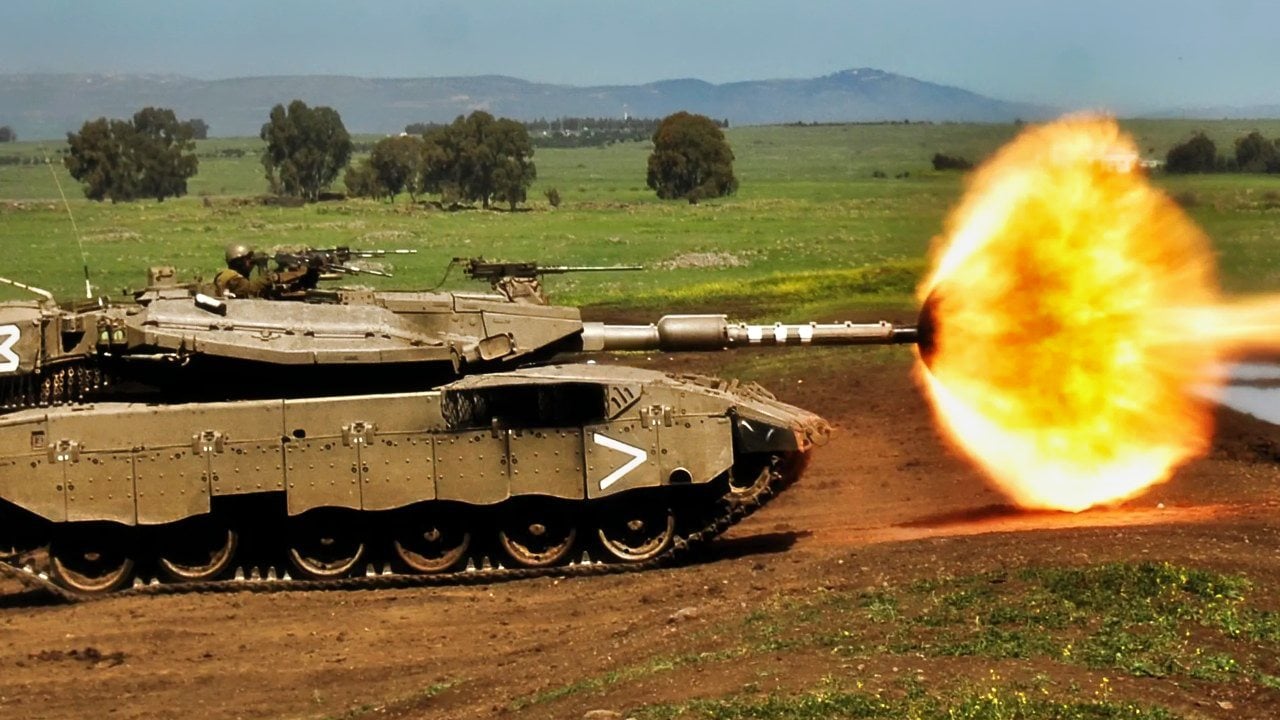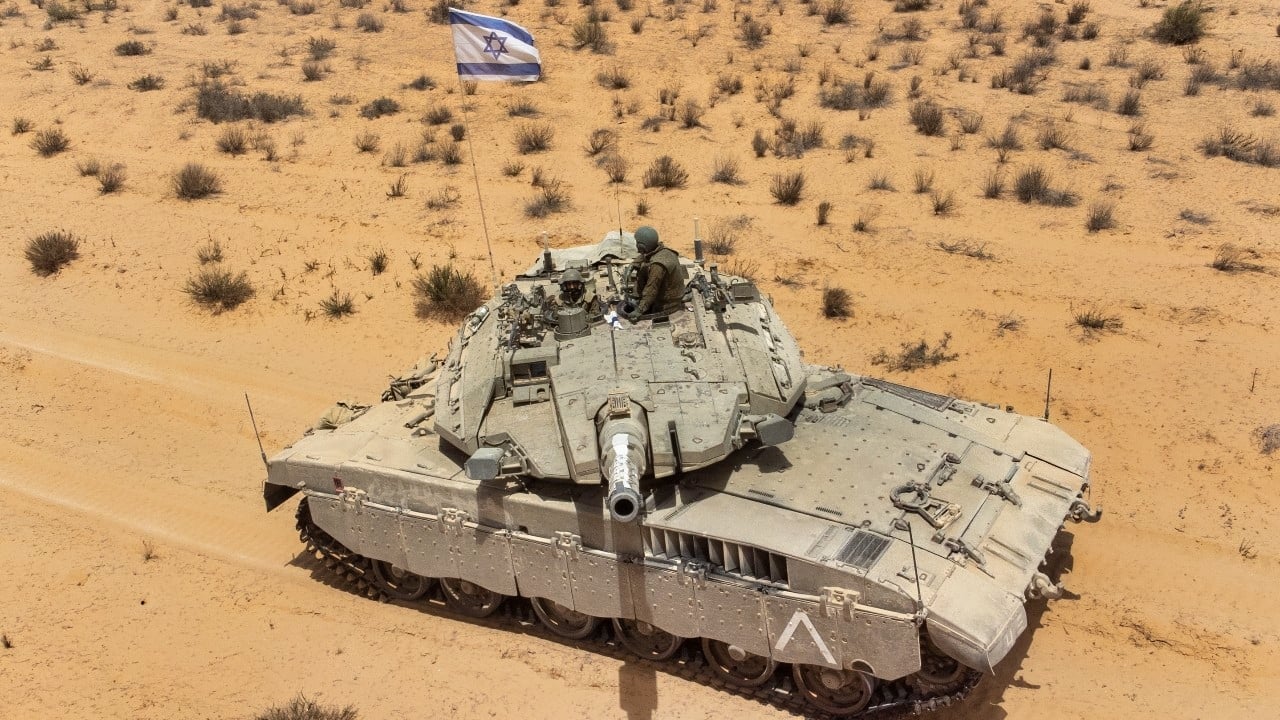The Israel vs. Hezbollah War of 2024 Is Getting Closer to Reality
The Israel Defense Forces are increasingly focused on the prospect of a large conflict developing with Hezbollah in northern Israel. The chances for a major war increased on September 17 when thousands of pagers used by Hezbollah members exploded in Lebanon, killing more than two dozen people and wounding thousands.
The Israel Defense Forces are increasingly focused on the prospect of a large conflict developing with Hezbollah in northern Israel. The chances for a major war increased on September 17 when thousands of pagers used by Hezbollah members exploded in Lebanon, killing more than two dozen people and wounding thousands. This was an unprecedented toll for Hezbollah to suffer in one day. The group has vowed to retaliate in a way that Israel cannot “imagine.”

Israel has deployed brigades and divisions in northern Israel in strength. Throughout the war in Gaza, which began with the Hamas attack on Israel on October 7, 2023, the IDF has focused on the possibility that a significant conflict will develop with Hezbollah. In fact, when Hamas attacked on October 7, many assumed it was only the opening move of a larger attack by Hezbollah and Iranian-backed proxies in Yemen, Syria, and Iraq. For this reason, Israel has been on alert in the north for eleven months. One outcome of that alert was the decision in October 2023 to evacuate more than 60,000 Israelis from their homes. The evacuation took place along the line of Israeli communities that are on the Lebanese border.
The Israeli communities on the Lebanese border were aware of the Hezbollah presence across the border. They could see Hezbollah members patrolling and monitoring Israeli activity. Hezbollah didn’t seek to hide. It built barely disguised observation posts. Near Metulla, a bucolic border town that sits at the head of the Huleh valley, Hezbollah would fly large flags across the border so that Israelis could see their presence plainly. Therefore, when the war in Gaza began, it was assumed that Hezbollah posed a larger threat. The group has an extensive arsenal of rockets and missiles, estimated at more than 150,000 projectiles. It also has anti-tank guided missiles and a large number of kamikaze drones. These are similar to the designs of drones that Iran has exported to Yemen and Iraq and which Iran has provided to Moscow over the last several years.
Hezbollah has chosen to carry out daily attacks on Israel using its arsenal. It usually launches a few dozen rockets and several drones and missiles a day. Most of these land within a few miles of the border. This has become a war of attrition. However, Hezbollah has vowed at times to increase the range and quality or quantity of its attacks. In July, a Hezbollah Falaq rocket killed twelve teens and children in the town of Majdal Shams in the Golan. This was a major escalation. However, Hezbollah denied responsibility for the attack. It’s likely it did not intend to kill so many people, and it knew Israel would then retaliate. Israel did retaliate, killing Hezbollah commander Fuad Shukr in Beirut. This set in motion a new cycle of attacks, in which Hezbollah fired hundreds of rockets at Israel on August 25, triggering an Israeli counter-strike.
The exploding pagers now may push the Israel-Hezbollah conflict into a new phase. Hezbollah has suffered a large number of casualties. It is not clear how many Hezbollah fighters have been impacted. However, the group announced thirty-eight fallen members. This means the group has now lost 478 members since it began its attacks on Israel. The death toll for the September 17 exploding pagers incident is now the largest single-day death toll for the group since October 2023. Hezbollah will want to respond.
Meanwhile, the IDF is preparing for this eventuality. The IDF has sent its 98th Division, which is composed of commandos and paratroopers, to the north to prepare for escalation. The 98th Division played a key role in fighting in Gaza. It was the division that took Khan Younis from Hamas in January and February 2024, in tough fighting that required the commandos and combat engineers to enter tunnels to root out terrorists. The 98th gained more experience in a number of raids into Gaza between May and July 2024. The 98th Division will join the 36th Armored Division, which the IDF had redeployed from Gaza to the north earlier this year. Along with these units, the IDF has the 91st Division, which is the main division responsible for securing the Israeli border with Lebanon. These units have reserve brigades that have been rotated into the north and also trained throughout the war to prepare for possible confrontation with Hezbollah.
For the IDF, this has been a long waiting game. The IDF doesn’t train units to sit in bivouacs and stay on the defensive. Instead, Israel had trained for years for rapid ground maneuver of forces using the latest technology to work closely with the air force and navy to strike at enemies such as Hezbollah. In fact, the main training of units such as the 36th Division was for war in the north. Its constituent units, such as the Golani infantry and 7th Armored, often trained to assault hilly and mountainous terrain, as one would find in southern Lebanon. Israel’s soldiers are well prepared for a war in the north.
The question facing Israel’s political leadership and its security establishment is what kind of strategy it has now for the Lebanon front and Gaza. In Gaza, the fighting has been reduced since its heavy clashes during the opening months of the war. The IDF has two divisions in Gaza, one on the Egyptian border and one in central Gaza. Hamas has lost many fighters and has fewer rockets than when the war began. However, the terrorist group is still deadly. On September 17, the IDF announced that four soldiers had been killed and a number wounded in southern Gaza. The fight is ongoing against Hamas, which continues to control parts of central and northern Gaza.
Meanwhile, in Lebanon, Hezbollah has suffered a setback. Nonetheless, it still has more than 30,000 fighters under arms. It has dug into areas in southern Lebanon, tunneling into the rocky countryside and preparing for a major war. With Iranian backing, the group also expects to receive support from other fronts, such as Iranian proxy militias in Syria and Iraq.

Hezbollah also has forces in Syria. Hezbollah is aware of Israel’s capabilities, and it knows that Israel is now concentrating forces in the north. However, it also believes that it has enough capabilities to pose a serious threat to Israel. If Hezbollah chooses to strike Israel, it will be unleashing a war whose outcome and dynamics neither side could possibly predict.
About the Author
Seth Frantzman is the author of The October 7 War: Israel’s Battle for Security in Gaza (2024) and an adjunct fellow at The Foundation for Defense of Democracies.
Image Credit: Shutterstock.


